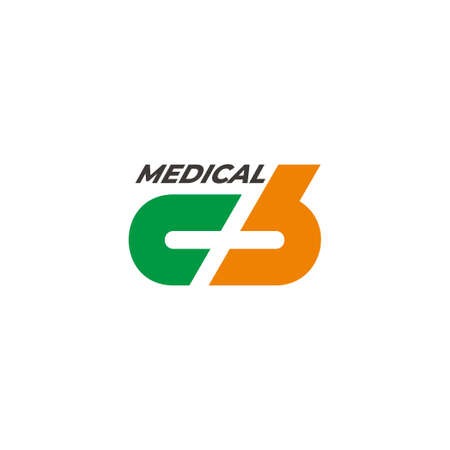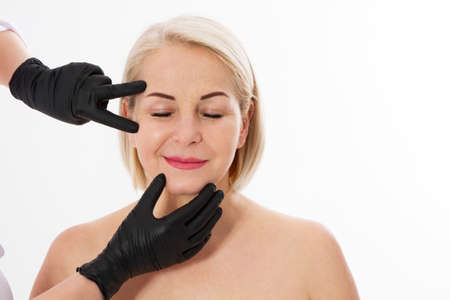Introduction to Tattoo Removal in the UK
Over the past decade, there has been a notable increase in the number of individuals seeking tattoo removal across the United Kingdom. While tattoos were once considered a lifelong commitment, evolving personal preferences, professional requirements, and advancements in removal technology have contributed to a significant rise in demand for safe and effective tattoo removal solutions. Among the various methods available, laser tattoo removal has emerged as the preferred choice for many British clients due to its precision, minimal invasiveness, and proven results.
The popularity of laser procedures in the UK is not only driven by technological innovation but also by an increased awareness of skin health and aesthetics. Leading clinics throughout London, Manchester, Birmingham, and other major cities now offer specialised services tailored to diverse skin types and tattoo complexities. British clients are particularly discerning when it comes to safety standards, practitioner qualifications, and aftercare support—factors that play a critical role in their decision-making process. Understanding these unique cultural and regulatory considerations is essential for anyone contemplating tattoo removal within the UK.
2. Understanding How Laser Tattoo Removal Works
Tattoo removal using lasers is a highly specialised process that relies on advanced technology and an understanding of how light interacts with ink pigments under the skin. Here, we break down the science behind this treatment and explain what determines its effectiveness.
The Science Behind Laser Tattoo Removal
Laser tattoo removal works by directing concentrated beams of light at the tattooed area. The energy from the laser is selectively absorbed by the tattoo ink particles, causing them to heat up and shatter into much smaller fragments. Once broken down, these fragments are gradually removed by the body’s immune system over several weeks or months.
How Lasers Target Ink
Different wavelengths of laser light are used to target specific colours of ink. For example, black ink absorbs all wavelengths and responds well to most laser types, while coloured inks such as green, blue, and red require specific lasers for optimal results. The ability of a laser to effectively break down ink depends on matching the wavelength to the ink colour, ensuring maximum absorption and minimal damage to surrounding skin.
Factors Influencing Effectiveness
| Factor | Description |
|---|---|
| Ink Colour | Darker inks (black, navy) are easier to remove than lighter ones (yellow, green). |
| Ink Depth | Inks injected deeper in the dermis may require more sessions for complete removal. |
| Skin Tone | Lighter skin allows for more aggressive treatment with less risk of pigmentation changes; darker skin may need gentler settings. |
| Tattoo Age | Older tattoos tend to fade more easily because some ink has already been absorbed or dispersed over time. |
| Tattoo Size & Location | Larger tattoos or those located on areas with lower blood flow (like ankles) can take longer to remove. |
| Immune System Response | A healthy immune system helps clear fragmented ink more efficiently post-treatment. |
Key Takeaways for UK Patients
Understanding these scientific principles is essential when considering laser tattoo removal in the UK. Not only does it help set realistic expectations about results and timelines, but it also highlights why a consultation with a qualified practitioner using the appropriate device is crucial for safe and effective treatment tailored to British skin types and tattoos.

3. Types of Laser Devices Used in the UK
When considering tattoo removal, it is essential to understand the different types of laser devices available across UK clinics. The choice of technology can greatly influence both the effectiveness and safety of the procedure. Below is a breakdown of the most common laser technologies for tattoo removal used throughout the country, along with their unique advantages.
Q-Switched Lasers
Q-switched lasers are widely regarded as the gold standard for traditional tattoo removal in the UK. These devices emit high-intensity pulses in nanoseconds, which target and shatter ink particles without causing significant damage to surrounding skin. There are several subtypes, including:
Q-Switched Nd:YAG Laser
This versatile device operates at two wavelengths (1064nm and 532nm), making it particularly effective at treating darker inks like black and blue as well as brighter pigments such as red and orange. Its popularity stems from its ability to treat various skin types with reduced risk of scarring or pigmentary changes.
Q-Switched Ruby Laser
The Q-switched ruby laser, operating at 694nm, excels in removing green and blue tattoo inks that are often resistant to other wavelengths. However, this laser is generally best suited for individuals with lighter skin tones due to the risk of hypopigmentation in darker complexions.
Q-Switched Alexandrite Laser
This device functions at 755nm and is particularly effective on green and black inks. While less commonly found than the Nd:YAG, it remains a valuable option for certain stubborn tattoos.
Picosecond Lasers
In recent years, picosecond lasers have emerged as a cutting-edge alternative for tattoo removal in leading UK clinics. Unlike Q-switched devices, picosecond lasers deliver ultra-short pulses measured in trillionths of a second. This rapid delivery means ink particles are fragmented into even smaller pieces, enabling the body to clear them more efficiently.
Main Advantages of Picosecond Lasers
- Faster results: Many patients require fewer sessions compared to traditional lasers.
- Enhanced clearance: Particularly effective for stubborn or previously treated tattoos.
- Reduced side effects: Lower risk of blistering, scarring or pigmentation changes, even on sensitive skin types.
Popular brands offering picosecond technology in the UK include PicoSure and PicoWay, both recognised for their efficacy across a spectrum of ink colours and skin types.
Selecting the Appropriate Device
The optimal laser device depends on factors such as ink colour, depth, patient’s skin type, and previous tattoo treatments. Leading UK practitioners will typically tailor their approach by combining technologies where necessary to achieve the safest and most effective results for each individual.
4. What to Expect Before, During, and After Treatment
A Step-by-Step Guide to the UK Standard Tattoo Removal Process
Understanding what to expect throughout your tattoo removal journey is essential for setting realistic expectations and ensuring a smooth experience. Below is a comprehensive breakdown of the typical process in the UK, including key stages and timelines.
Step 1: Consultation
The first step involves an in-depth consultation with a certified practitioner. During this session, your tattoo will be assessed for size, colour, age, skin type, and overall health. This is also an opportunity to discuss your medical history, set expectations regarding results and number of sessions needed, as well as costs involved. Patch testing may be performed to determine skin sensitivity to the chosen laser device.
Step 2: Pre-Treatment Preparation
You may be advised to avoid sun exposure, tanning products, or certain medications prior to treatment. The area should be kept clean and free from lotions or perfumes on the day of the procedure. Your practitioner will provide specific instructions based on your individual needs.
Step 3: The Laser Removal Session
During the session, protective eyewear is provided for safety. The practitioner uses a handheld laser device targeting the tattooed area. You may feel a sensation similar to a rubber band snap against the skin—discomfort levels vary depending on personal pain tolerance and tattoo location. Most sessions last between 15 minutes to an hour, depending on tattoo size and complexity.
Treatment Experience Table
| Stage | What Happens | Patient Experience |
|---|---|---|
| Consultation | Assessment & patch test | No discomfort; information gathering |
| Pre-treatment prep | Avoid sun/skin products; cleanse area | No discomfort; preparation phase |
| Treatment session | Laser application with cooling if needed | Mild-moderate discomfort; short duration |
| Immediate aftercare | Soothe area with ice/ointment; bandage applied | Mild tenderness; redness/swelling possible |
| Follow-up/Healing | Monitor healing; attend further sessions as advised | Temporary scabbing/blistering may occur; fading observed over weeks |
Step 4: Immediate Aftercare
Post-session, your practitioner will apply a soothing ointment and sterile dressing to protect the treated area. You may experience redness, swelling, or blistering—these are typical reactions and should subside within several days.
Step 5: Long-Term Care & Follow-Up Sessions
Your skin must heal fully before subsequent treatments—sessions are usually spaced 6-8 weeks apart. It’s crucial to follow aftercare instructions such as keeping the area clean, avoiding picking at scabs, and refraining from direct sunlight exposure. Fading of the tattoo occurs gradually across multiple sessions.
Typical Timelines Table (UK Standards)
| Tattoo Size/Complexity | Total Number of Sessions (Average) | Total Duration (Approximate) |
|---|---|---|
| Small/simple (black ink) | 3-6 sessions | 3-9 months |
| Medium/multi-colour | 6-10 sessions | 9-18 months |
| Large/complex/multicoloured | 10+ sessions | 12-24 months or more |
Real Patient Expectations in the UK Context
The majority of patients in the UK report gradual but visible fading of their tattoos over time. Complete removal depends on factors such as ink depth, colour variety, skin response, and adherence to aftercare protocols. Some residual shadowing or slight pigmentation changes may persist but can often be minimised through professional aftercare and additional treatments if necessary.
5. Potential Risks, Side Effects, and Safety Standards
While laser tattoo removal is generally considered safe and effective when performed by qualified professionals, it is important to be aware of potential risks and side effects. Understanding these factors and the stringent safety standards observed in the UK can help clients make informed decisions about their treatment.
Common Side Effects Associated with Laser Tattoo Removal
The most frequently reported side effects are temporary and typically mild. These may include:
- Redness and swelling: Most clients experience some degree of redness and swelling in the treated area immediately after each session, usually subsiding within a few hours to a couple of days.
- Blistering and scabbing: As part of the natural healing process, small blisters or scabs can develop. These should not be picked at to avoid scarring.
- Temporary changes in skin pigmentation: Some people may notice lightening (hypopigmentation) or darkening (hyperpigmentation) of the skin, which often resolves over time as the skin heals.
- Mild discomfort: A sensation similar to a rubber band snapping against the skin is common during treatment, but this is typically well-tolerated.
Serious Risks (Rare)
- Scarring: While rare when performed correctly, improper aftercare or aggressive treatment can occasionally lead to permanent scarring.
- Infection: There is a minimal risk of infection if aftercare instructions are not followed, but reputable clinics provide clear guidance to minimise this risk.
UK-Specific Regulations and Safety Protocols
The United Kingdom has strict regulations governing laser tattoo removal to ensure client safety. Key points include:
- Clinics must comply with guidelines set by the Care Quality Commission (CQC) in England, Healthcare Improvement Scotland (HIS), or equivalent bodies in Wales and Northern Ireland, where applicable.
- Learners operating laser devices must hold relevant qualifications and receive proper training specific to tattoo removal procedures.
- Regular equipment maintenance and servicing are mandated to guarantee device efficacy and reduce risks associated with malfunctioning lasers.
How Reputable Clinics Uphold Safety Standards
- All treatments begin with a comprehensive consultation, including assessment of medical history, skin type, and patch testing to predict individual response.
- Treatment rooms are equipped with protective eyewear for both client and practitioner, alongside rigorous hygiene protocols.
- A personalised aftercare plan is provided to every client, detailing steps for optimal healing and minimising complications.
Conclusion: Prioritising Safety in the UK
By adhering to robust UK regulations and prioritising client welfare through high standards of training and care, leading clinics ensure that laser tattoo removal remains a safe option for those seeking to remove unwanted ink. Always choose a clinic that demonstrates full compliance with local legislation and best practice guidelines for peace of mind throughout your treatment journey.
6. Choosing a Qualified Laser Tattoo Removal Clinic in the UK
Key Criteria for Selecting a Trusted Clinic
When considering laser tattoo removal, selecting the right clinic is paramount for safety and optimal results. The UKs cosmetic industry is well-regulated, but standards can vary between providers. To ensure you receive high-quality care, it is essential to evaluate clinics based on several important criteria:
1. Practitioner Qualifications and Training
Ensure that the practitioner is not only certified but also specifically trained in laser tattoo removal. Look for credentials such as registration with the Care Quality Commission (CQC) in England, or equivalent regulatory bodies in Scotland, Wales, and Northern Ireland. Ask about ongoing professional development and hands-on experience with various laser devices.
2. Clinic Registration and Regulation
Trustworthy clinics should be registered with appropriate UK health regulators. Verify this information on official websites or ask the clinic directly. A reputable clinic will display their registration certificates and adhere strictly to national safety standards.
3. Technology and Equipment Standards
Ask which laser devices are used for tattoo removal—clinics should use CE-marked medical-grade lasers suitable for your skin type and tattoo characteristics. Enquire about equipment maintenance, calibration protocols, and infection control measures to ensure your treatment is both safe and effective.
4. Consultation and Patch Testing
A thorough consultation should precede any treatment. This includes an assessment of your medical history, skin type, tattoo colours, and expectations. Reputable clinics will always perform a patch test to check for adverse reactions before proceeding with full treatment.
5. Transparency in Pricing and Aftercare
Professional clinics provide clear, upfront pricing without hidden fees. They should also offer comprehensive aftercare instructions and support throughout your recovery process. Ask about follow-up appointments and how complications or concerns are managed post-treatment.
Essential Questions to Ask Before Committing
- What qualifications do your practitioners hold?
- Is your clinic regulated by the CQC or an equivalent authority?
- Which laser systems do you use for tattoo removal?
- Can I see before-and-after photos of previous clients?
- What does your consultation process involve?
- How do you manage aftercare and potential side effects?
Final Thoughts
Choosing a qualified laser tattoo removal clinic in the UK involves more than just finding convenient locations or competitive prices—it requires diligent research into practitioner credentials, technology standards, regulatory compliance, and patient care practices. By using these criteria and asking informed questions, you will be better positioned to achieve safe, effective tattoo removal within the UK’s robust cosmetic industry.

